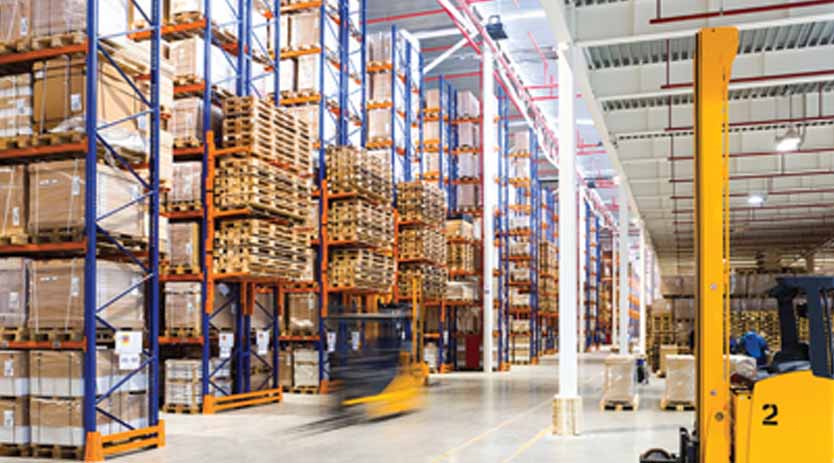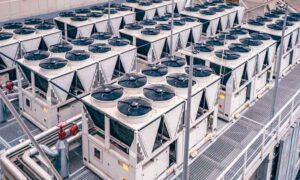Advancement and automation of cold chain for last mile connectivity and delivery require storable commodities to move in temperature controlled spaces in environmentally sustainable ways
Cold chain imparts storage and distribution services for products that have to be maintained at a given temperature. It includes the warehousing of temperature-sensitive products from the origin to the point of consumption and prevents spoilage. The cold chain is primarily used to maintain and extend the life of products such as fresh agricultural products, seafood, frozen food, chemicals, and pharmaceutical products. Presently, the cold chain logistics market is anticipated to witness significant growth, owing to the need for cold chain management in the pharmaceutical industry. Furthermore, RFID technology for cold chain applications and the adoption of software for cold chain logistics provide growth opportunities for the market players. Owing to its transformation to modern storage space, India’s cold chain logistics sector is expected to grow at over 20 percent CAGR by 2025. However, according to reports, the global cold chain logistics market value is projected to reach $782.27 billion by 2030, registering a CAGR of 14.6 percent from 2021 to 2030.
Monitoring, storing, and transporting are the crucial factors in the cold chain to prevent degradation in the quality of the shipments. Mobile robots are beneficial for moving goods from warehouse shelves to fulfillment zones. In cold storage, we preserve life, and the life of a lifesaving or life-giving commodity can go dead with improper preservation. So, large spaces have to be designed technically impeccable. You must then have data loggers that will log the temperatures in every reasonable interval. Voicing his opinion, Mr. Gubba Kiran, CEO of Gubba Cold Storage, says, “There must be an encouragement in public-private relationships for this industry. We must permit for more foreign direct investments.”
Large spaces cooling
Large open spaces in the malls, supermarkets, and ample cold storage need fresh air exchange. There has to be temperature-controlled storage. Explaining managing cooling in such large spaces with the new technologies or the solutions, Mr. Rajesh GoyalPresident, Federation of cold storage Associations of India, says, “There are technologies available now in India, and some of the new technologies are coming from the foreign countries also. We should explore how we can resolve the cooling spaces in big malls and other open spaces.” We have to make the optimum use of the space available to us and where the things are on the sale. In malls, products are also sold, and having spaced cooling distances in these areas will also provide outstanding sales for the fresh items, which is the time requirement. So, as far as technologies are concerned, we have to see which companies and consultants are tackling it. It has to be explored, and the technologies can be share with the consultants and the companies who can put up these things.
Potential cooling technologies
The frosting is the primary concern whether it is in the households or whether it is in commercial places. For instance, moisture is sometimes increased, and frost formation occurs. Sharing an opinion about available cooling technologies, Mr. Sushil Teotia-Asst. Vice President Sales, Bry-Air (Asia), Pvt.Ltd., says, “Actually, in the traditional method, which is typically used currently is very relevant to the viewpoint, because we are doing the cooling and then we are reducing the temperature, but that entire technology has a limitation; moisture cannot be reduced much beyond a point.” Generally, when the moisture load is very high in the atmosphere in the rainy seasons, the current system cannot remove that. It starts depositing around the coils and within the room. So, the new technology entirely depends on the removal of moisture using a desiccant technology, which can give you as little as less than 1 percent. So, there is no moisture present in the environment. And that has a positive impact on the shelf life of the product also.
The environment can be controlled to adjust per the product’s requirement. Every application and development has a different condition, whether onion drying, spice drying, chilling storage, or frozen food. So using the right combination of moisture and temperature can control frost precisely. That will ultimately increase the shelf life of perishable products. Mr. Sushil adds, “Increasing the shelf life means reducing wastage. Reducing the wastage means you’re the total cost of operation will reduce.”
Online food items ordering on an increasing spree
There is a growing trend of purchasing perishable food products online by ordering from home. Speaking on the growth of online purchases and innovations needed to provide last-mile delivery in time, Mr. Rajat Gupta- Cofounder and CEO of TESSOL, expressing optimism, remarks, “Depending upon what is the time of delivery required by the customer, whether it is a tenminute delivery are a four hour or twenty-four-hour delivery, there are specific solutions that are available for delivery of different products. One can evaluate which solution suits the product best.” In actuality, if the overall time is much shorter, like the 15-20 minutes or 30 minutes, people have been using insulated bags, and the cold chain is maintained till the delivery spot. But frozen products, especially ice cream, etc., require additional cooling and coolants even for a 30-minute delivery. So there are solutions, typically based on the phase change technology, being used very actively. Mr. Rajat says, “I think it’s a huge opportunity, and as I said, for different time durations and different products, there are different solutions available.” One must work on both the viability aspects and temperature to get an ideal long-term solution. Speaking on cold chain potential, Mr. Pankaj Mehta, Managing Director, Carrier Transicold, India & South Asia, “IoT plays an important role in providing end-to-end visibility within the cold chain ecosystem. Data transparency and traceability also ensure product quality and process efficiency.”
Moving ahead
The Indian cold chain industry is in a nascent stage. Investment is the perfect way to strengthen it. The pharmaceutical industry, flower industry, agriculture, dairy products, or anything else must go through the cold chain so that ample space can be provided on a pan-India basis for the preservations or logistics. Conservation must give people the best quality agricultural produce and dairy products over time. It will save national wastage and money. All those in the cold chain, like the farmers, promoters, storage people, and logistics, should devise new schemes and try to preserve new products and technologies. The key to success is creating technological solutions that save the national wastage of commodities and implementing cost-effective and energy-sensitive solutions. With industry 4.0, the focus is on automation. The more data you have, the more credible analysis can be arrived at to see what happens when some parameters are altered. Or there could be more improvement in logistics structure. Mr. Kiran added, “Automation will be more like strength to the cold chain industry as it will enhance accuracy and save time and cost.” As necessary as retaining the quality of the good in the warehouse, it is equally essential to ensure the same quality is delivered at the end of the chain. Hence logistics is a very vital stage in the process of end-to-end solutions. Reefer logistics have been in place. However, we will need a robust logistics structure to be redefined.
The cold chain can play a pivotal role in establishing food security in India and around the world while opening many opportunities for farmers and various stakeholders in the supply value chain. Solutions are needed to maintain safety and preserve the quality of the goods for last-mile delivery. That is the motto to deal with the increasing demand for home delivery and e-commerce facilities. The next-generation storage and logistics solutions based on automation technologies require time for the cold supply chain. That is ultimately what the industry players expect in moving ahead in time.
Cookie Consent
We use cookies to personalize your experience. By continuing to visit this website you agree to our Terms & Conditions, Privacy Policy and Cookie Policy.













